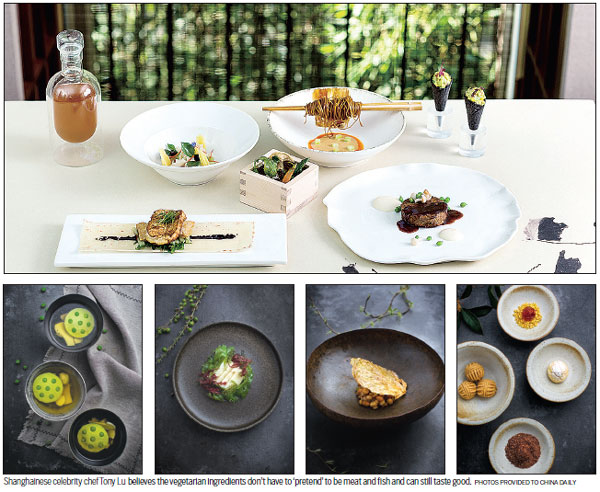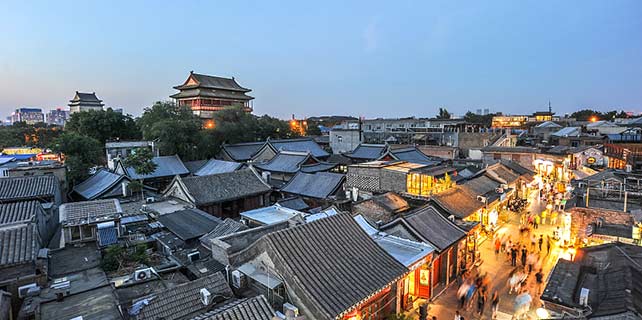A modern interpretation of vegetarian cuisine

While many types of vegetarian dishes in China are made using faux meat, Shanghainese chef Tony Lu believes in doing away with the pretense, saying that a mushroom should simply be presented as a mushroom.
And it is arguably this belief that earned his Fu He Hui restaurant a star in the inaugural Michelin Guide Shanghai last year.
"Faux meat and fish are so deeply rooted here in Shanghai that when people talk about vegetarian food, the images of fish and meat automatically pop out. It's a trick to get non-vegetarians into a vegetarian restaurant," said the 41-year-old.
Lu currently runs a total of six restaurants in east China, including Yong Yi Ting, another Michelin-starred establishment located in Mandarin Oriental that offers Huaiyang cuisine, believed to be China's most exquisite and refined culinary style. Four of these six restaurants fall under the brand Fu, which means "luck" or "blessing" in Chinese, and are funded by Shanghainese businessman Fang Yuan.
Founded in 2014, Fu He Hui is a contemporary restaurant that serves vegetarian fare in a minimalist and refined setting. The establishment raised eyebrows three years ago when it debuted its vegetarian menu that only has three sets ranging from 380 yuan ($56) to 880 yuan. But despite the relatively high prices, business has been brisk since the restaurant opened.
"I wanted to offer an alternative, in which all the vegetarian ingredients don't have to 'pretend' to be meat and fish, and can still taste good," said Lu.
Every set menu at Fu He Hui comes with eight courses. The garden, one of the starters, uses potato mousse as its base, features fragrant vegetables and truffles, and utilizes wheat bread to produce a smooth yet crisp texture. The soup dish called Lotus Mushroom uses a special mushroom of the same name as its core ingredient alongside other elements such as vegetables and Longjing green tea.
Among the five main courses, the white king oyster mushroom dish may be the most "meaty" of the lot, thanks to the robust flavors and textures, but every ingredient is nevertheless presented as itself and not as a mock meat. Inspired by Peking roasted duck, chef Lu pairs the juicy oyster mushroom with cucumber slices and sweet soy bean paste, and wraps them in a pancake.
The sticky rice cake dessert is beautifully presented in a wooden box, with dehydrated twig-like enoki mushrooms planted in mashed coco beans that resembles soil. The rice cake, which is served on a stick like a popsicle, is slightly fried to a golden crisp, while the inside remains soft and warm.
Chinese poems often state that the best rice cake should be white as snow and stick to the teeth like how thick snow adheres to the feet, making every bite a difficult but enjoyable challenge. This dessert achieves exactly that.
















